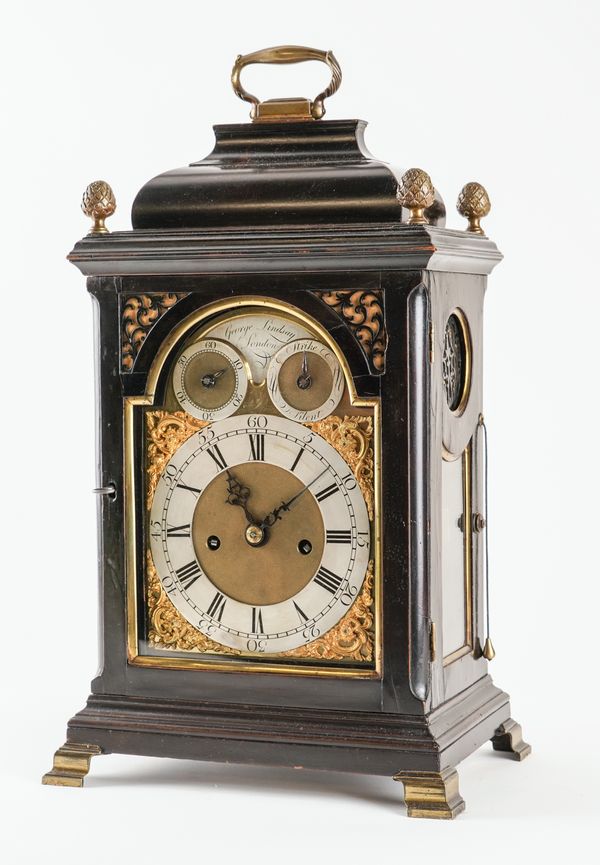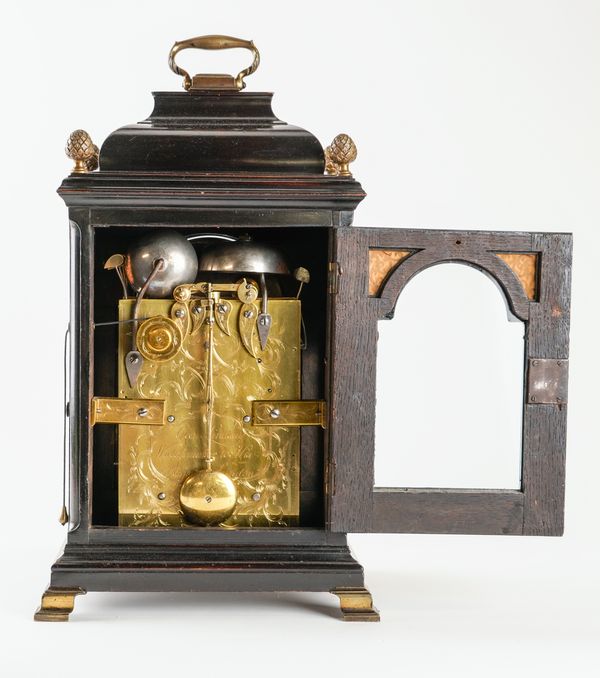A GEORGE III BRASS-MOUNTED EBONISED QUARTER-REPEATING VERGE BRACKET CLOCK WITH PULL QUARTER REPEAT
By George Lindsay, London, circa 1760
| Estimate: | £4,000 - £6,000 |
| Hammer price: | £4,000 |
The case with an inverted bell-top, surmounted with a brass carrying handle, above moulded cornice, the door with two upper fret spandrels and moulded brass edge to the glass, the sides each with a round fret panel above a shaped rectangular glass, on stepped base and brass ogee bracket feet, the 6in arched brass dial, signed in a recess George Lindsay, London and flanked by a calibrated dial for regulation and Strike / Silent, with cast spandrels enclosing the silvered chapter ring, with matted centre, the twin train gut fusée movement, signed Geo Lindsay, Watchmaker to His Majesty London, with engraved backplate, with pull quarter repeat on a carillon of six bells, and hour strike on a larger bell
44cm high
George Lindsay (d. 1776) is recorded firstly as an Instrument maker 'G Lindsay Watch & Clockmaker to his Royal Highness ye Prince of Wales at ye Dial near Catherine Street in ye Strand. Inventor & Maker of ye Generally portable microscope'.
He is celebrated as the first to have a patent granted for a portable microscope (The silver version, No. 1, presented to George II, now at The Whipple Museum, University of Cambridge) in 1743.
A brass version of the microscope dated 1746 was sold at Bonhams, London, 15 September 2021, lot 56.
A very similar clock by Lindsay sold at Bonhams, London, 17 June 2003, lot 102.
In good original condition. The dial is dirty and would benefit from a clean. The movement may require a service. The right-hand winding arbour is noticeably out of centre in the dial aperture, indicating wear to its hole in the front plate. The movement otherwise looks well cared for. The case overall with some marks and knocks consistent with age.

